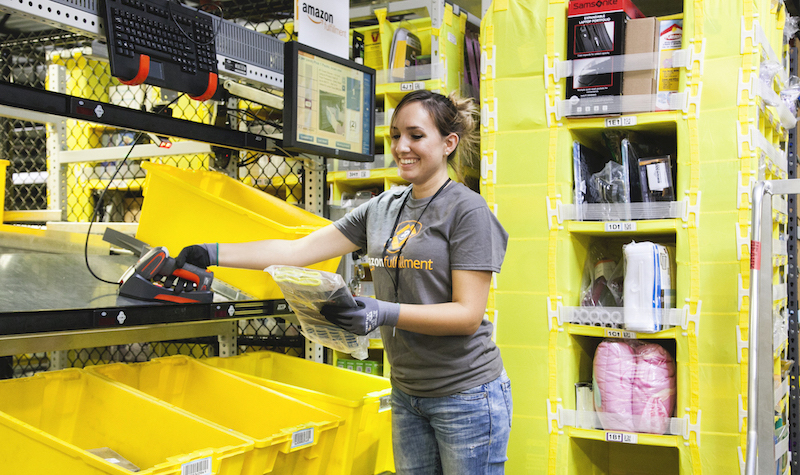
Charging into the Future
For thousands of years, retail sales were carried out in the same manner: one person handed something of value—a coin, bill or check—to another person, who gave them the merchandise they wanted to buy. When mail-order was all the rage, customers sent postal money orders or paper checks along with their order forms. And while many retailers had been extending credit to their loyal customers for centuries, the idea of a “credit card” didn’t take off until the late 1950s. Unlike early “charge” cards which had to be paid off in full every month, credit cards let consumers carry a balance—a balance the card issuer charged interest on every month.
Credit cards kicked off yet another era, one that allowed consumers to avoid making trips to the bank for cash or writing checks at the register. But the credit card would never have had a chance to succeed had it not been for the establishment of global communications networks comprised at first of wires and undersea cables, and later by satellites, computer terminals, and massive customer databases.
It’s a Small World After All
Electronic financial transactions such as buying stocks or “wiring” large sums of money have been carried out by banks, brokerages, and corporations for more than half a century, but for most people, even those living in industrialized countries, buying merchandise via individual electronic transactions is a relatively new phenomenon. The popularity of personal computers and commercial online services in the early 1980s created a new marketplace for goods and services that did not require a physical storefront in a customer’s home town to conduct business. Consumers could reach out to merchants across the country or across the ocean via computer and modem, provide their credit card info, and days or weeks later, their merchandise would arrive by mail or express shipping.

Security was a concern and fraud was not uncommon, but the age of electronic commerce had taken hold, and “online shopping” entered the lexicon.
Dot Commerce
The history of the Internet and the rollout of the World Wide Web in 1991 is well-documented, but what many may not remember is that the vast majority of companies that ventured out onto the Web saw it as simply a new advertising vehicle and not a storefront. The idea that large numbers of consumers would be willing to transmit their sensitive credit card information over a dial-up connection to a faceless computer was considered absurd at the time, and most orders for merchandise were placed over the phone. Even the first online pizza delivery service required you to pay on arrival and to provide a phone number so the store could call you to make sure the order wasn’t a prank.
In a few short years, however, thanks to advancements in encryption and the explosion in popularity of America Online, entrepreneurs began to sense an opportunity, including a former Wall Street whiz kid named Jeff Bezos.
The Amazon Effect
Amazon launched in the mid-90s, billing itself as the “Earth’s biggest bookstore.” The startup cut deals with book distributors and wholesalers to fill its orders, undercutting its brick-and-mortar rivals and driving them out of the business. In the years that followed, Amazon would expand its product lineup from books to consumer electronics, household goods, clothing, shoes, toys, and virtually anything that you would fit in a box or padded envelope.

As it grew exponentially, Amazon built two large fulfillment warehouses (one on each coast) to house its inventory. From there, a network of more than 100 fulfillment centers would spring up across the U.S. as the company sought to stockpile its goods closest to its most lucrative customer markets in the wealthiest and most populated states in the country. By pre-positioning its most popular items this way, Amazon could offer fast, free shipping, which meant it’s customers would never need to circle the mall looking for a parking space again.
The threat posed by Amazon pushed many traditional retailers like Walmart and Target onto the Web, forcing them to make substantial investments in their own e-commerce operations and warehouse networks. It also created a new market for companies making software and hardware specifically for warehouses—including robotics and automation startups like inVia Robotics.
Retailing to E-tailing
In just 25 years, barely a blip on the historical timeline of retailing, online sales would grow to account for a whopping 16% of total retail sales in the United States, and they’re expected to continue climbing. Virtually every business you can name has an online presence and a way to process orders and ship merchandise to your door.
Even the manner in which many people shop online has changed significantly in just the last dozen years with the proliferation of smartphones and high-speed data networks. Now, instead of browsing online stores from their desks, consumers hold the retail world in the palms of their hands.

What’s Next?
What does the future of retailing look like? That’s hard to say. Augmented reality apps currently let you see what products would look like in your home before you buy them, while smart speakers let you buy products with voice commands. And while Amazon and other companies have been recommending products based on past purchases for decades, artificial intelligence may use predictive, behavioral and environmental measurements to automatically order your favorite Thai food if you are late getting home from work, or buy you a new Winter wardrobe after you’ve booked a ski trip.
Whatever the future holds, inVia will be there working hard to make sure that the products your customers buy online make it to their front door as quickly and efficiently as possible, so your business thrives.